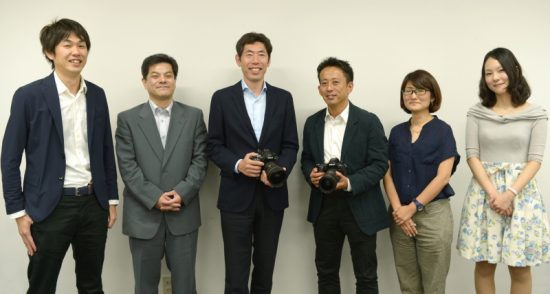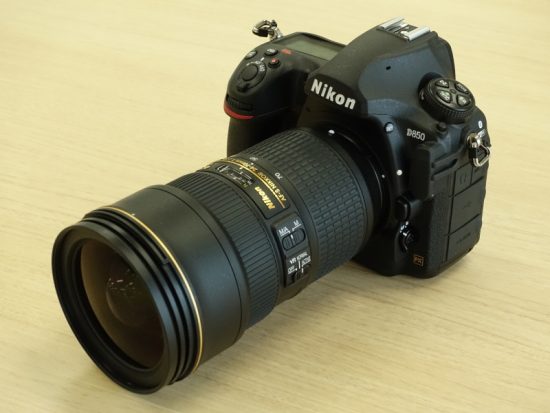
A while back I posted links to a recent DC.Watch interview with the team who worked on the Nikon D850 camera. Yesterday a member of the NikonGear forum posted a nice recap of the interview:
Part 1 (original DC.Watch article | Google translation)
1. D850 was developed as follower of D810 for the more pixels, the faster frame rate and the higher functionality.
2. The higher pixel count and the higher frame rate have been required from the bird and airplane photographers as well as the landscape shooters.
3. Nikon is not sure if the ability to shoot 4k video would contribute to the higher sales, but considers as part of the expanded possibility of expressions.
4. According to Nikon’s own research, only 20% of Japanese users shoot videos on a routine basis, whearas 80% of other Asians, Europeans and Americans shoot videos on a daily basis.
5. They decided to avoid the on-sensor phase-detect photosites because of the possible negative impact on the image quality.
6. The electronic-optical hybrid viewfinder was avoided due to the potential degradation of the optical quality of the finder image (when the display is inserted in the optical path) or to the additional size (then the display is incorporated to project its image into the optical path).
7. The 0.75x optical viewfinder was one of the challenges for Nikon to provide better view for more precise focusing for the higher megapixel model.
8. The model number jumped from 810 to 850 because of large technical leap. However, they wanted to present it as D8x0 series model and didn’t jump all the way onto “D900”.
9. Contrary to the fairly large leap from 24MP (D3X) to 36MP (D800), 36MP to 45MP is not as large. But Nikon considers that they can strike the best balance between the high MP count, high-ISO performance and higher frame rate with 45MP.
10. D850 is made in Thailand. They control the quality in the same way regardless of the location of production, Thailand, China or Japan.
11. The faster data read-out on the sensor was achieved by the copper wiring method instead of the conventional aluminum wiring.
12. Nikon doesn’t disclose the manufacturer of the sensor.
13. ISO 25600 in normal mode was achieved mainly by the backside lighting technology of the sensor and the more efficient noise handling of the Expeed 5 chip.
14. The newly included “AUTO” picture control is based around “STANDARD” but fine-tunes the tone curve and the color rendition automatically using the advanced scene recognition function.
15. The electronic first curtain can be used not only in the conventional M-up mode but also in Q and Qc mode.
16. The highest frame rate slows down in the silent (electronic) shutter mode, because its image processing is different from that of mechanical shutter mode, and it takes a little more time to process.
17. With the battery grip MB-D18, 9 fps continuous shooting is possible with a 12V battery including all EN-EL18, 18a and 18b.
18. D850 doesn’t employ the monocoque construction found in D750 or D500.

Part 2 (original DC.Watch article | Google translation)
1. The face detection mode should be turned off when too many faces are in one frame (LOL).
2. The AF works at down to -4EV which approximates the scene under the “dark moonlight”.
3. The accuracy of the focus aid has been improved: you can manual-focus with a fast lens more accurately.
4. (relating to 3) You may not enjoy the improved accuracy with the older MF lenses due to the lack of any feedback of the information from them.
5. Nikon doesn’t name any “recommended” software for merging the images of stacked focus but mentions Photoshop, Helicon Focus as well as Combine ZM.
6. The metering sensor just “peeps into” the finder image through another optical system, so it is questionable if the image captured by the metering sensor could be reasonably used for the LCD, even if the resolution of the metering sensor is increased to be comparable with an image sensor.
7. The “Natural Light Auto” (NLA) white balance is dedicated, as the name indicates, to the natural light. The conventional AWB has been designed to handle various artificial lamps and thus couldn’t respond to the various lighting conditions under the natural light. The dedicated NLA addresses the problem.
8. The built-in flash is omitted to facilitate the use of PC lens, and to avoid the inadvertent pop-up of the flash by pushing the pop-up button accidentally with the external flash attached to the hotshoe.
9. You CAN use the older EN-EL15 (non-a) battery with D850, although its performance could be lower than that of EN-EL15a.
10. The “8k time lapse” function only means that the camera can gather the images for the 8k time lapse video. It doesn’t mean that you can “process” the 8k video using the internal video function.
Like: Nikon D850 Facebook Page | Join: Nikon D850 Facebook Group
Check D850 availability: B&H | Adorama | Amazon | BuyDig | Cameta | Focus Camera | eBay | WEX | Jessops







